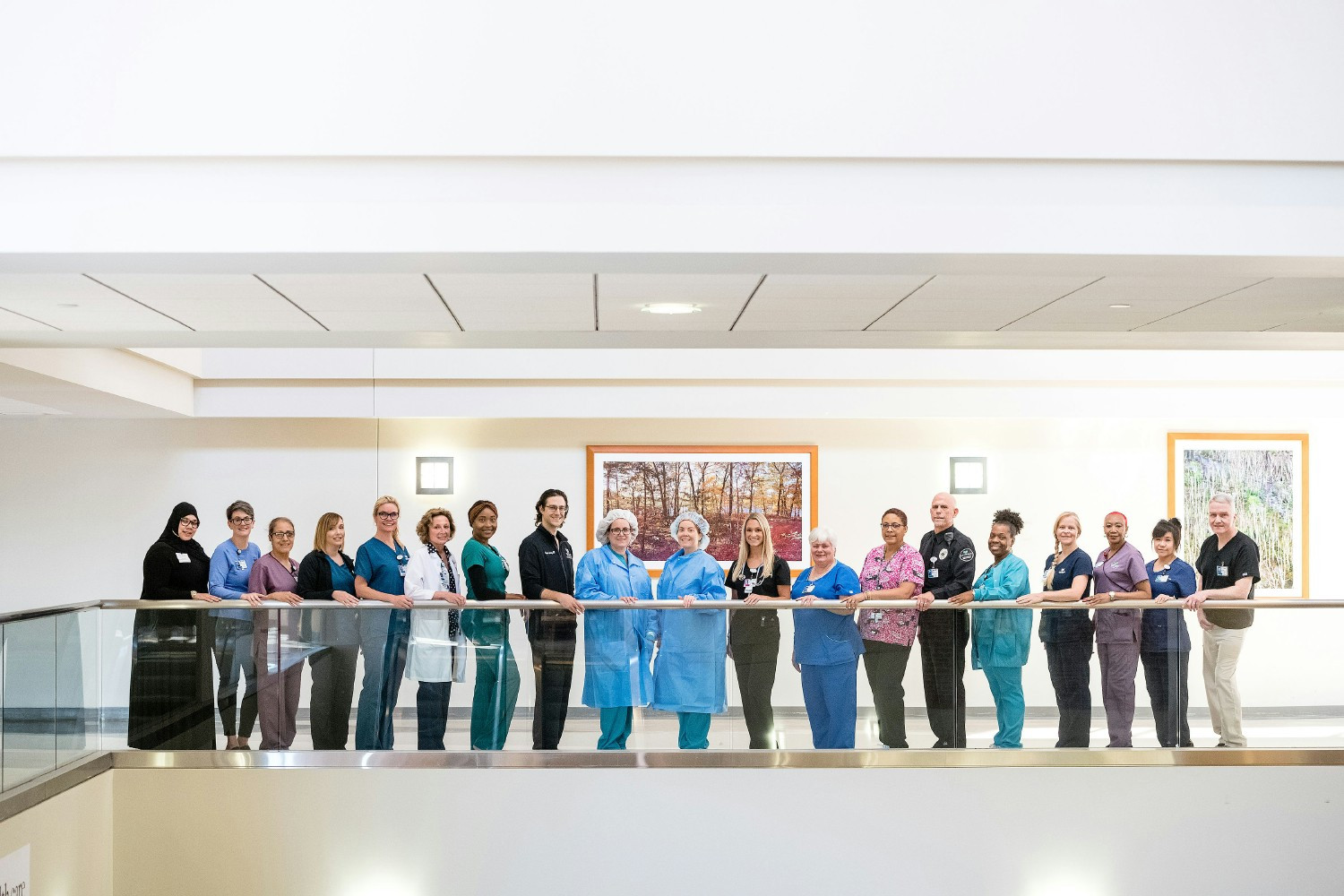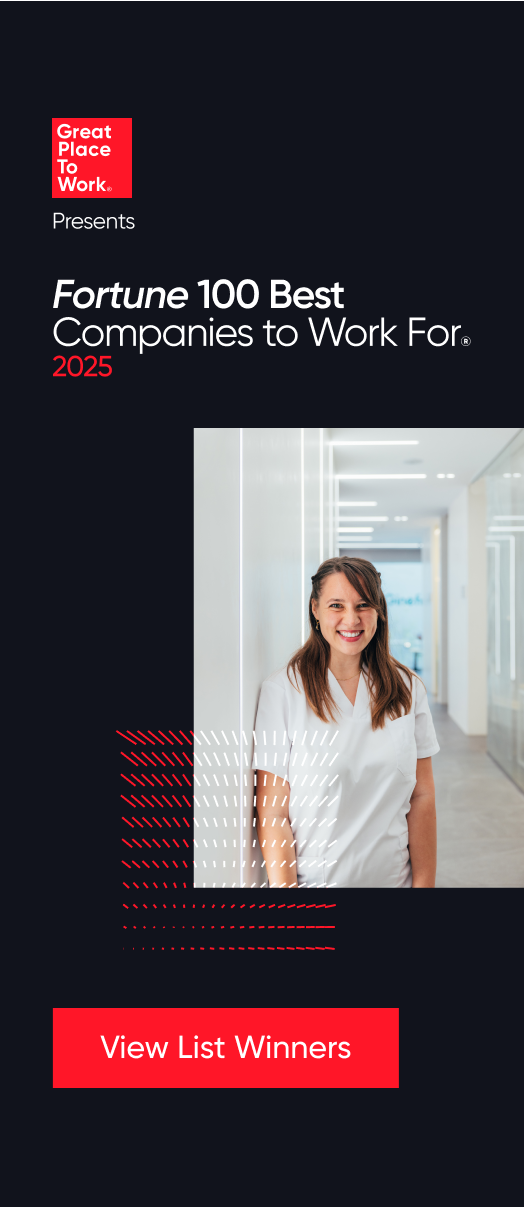Employee Well-being, Remote & Hybrid Culture
The Pennsylvania health care system saw a five-point increase in the number of employees who reported a psychologically and emotionally healthy work environment.
The health care industry hasn’t recovered from the COVID-19 pandemic.
“We are just now looking back inward to say, ‘What was the impact on our health care employees,’” says Gina Ebersole, assistant vice president of talent strategy at Main Line Health, a system of five hospitals and a network of health centers and providers in suburban Philadelphia.
“People have left the health care industry in droves,” she says, and that’s changed everything in what was already a stressful industry. The organization is now more focused on resiliency, burnout, self-care, and well-being.
After two years of work, Main Line Health is starting to see movement in its employee survey results. On it’s most recent Great Place To Work® survey, the number of employees who said they had a psychologically and emotionally safe workplace went up by five points.
The gains were mirrored by improvement in the number of employees who reported being able to take time off when needed and having a healthy work-life balance, both of which also improved five points.
Turning listening into action
What’s behind the results? There are too many different initiatives in play to draw a direct line to results, Ebersole says. However, it’s clear that the organization has improved how it listens to employee concerns.
“Really what we’re trying to do is create more transparency,” Ebersole says. To give employees the space to voice concerns, Main Line Health holds safety standup huddles, ensures leaders have one-on-one skip-level meetings, and takes cues from survey results.
The most important step? Taking action on what you learn from listening efforts.
As an example, employees raised concerns about personal safety in acute care environments in the hospital, Ebersole says. Main Line Health then took immediate action, rolling out weapons detection tools, handing out badges that can send a duress signal and summon security personnel, and more.
The swift action builds trust, Ebersole says. “People talk, we listen, we act to do something about it.”
Increased flexibility
For health care companies, being able to offer flexibility is a competitive advantage in a tough labor market.
In new research from Great Place To Work, remote employees in health care had some better experiences than onsite colleagues when working for a typical U.S. company. They were:
- 24% more likely to report special and unique benefits
- 22% more likely to say their manager understands what is important to them
- 14% more likely to say they feel valued as full member of the team
Most health care roles aren’t going to become fully remote jobs — but the data suggests that health care companies who can offer more flexibility are more likely to attract the best talent.
Ebersole says that employee demands for increased flexibility is just the reality for health care organizations.
“We have to start thinking differently,” she says. “What is the other choice? We can continue in our same model experiencing staffing shortages and keep fighting it, expecting it to go back to the way it was. But, it’s not going to go back to the way it was.”
In practice, this means looking at different roles within the organization and questioning conventional wisdom.
“Can a role be hybrid? If the answer is ‘possibly’ or ‘potentially,’ explore it, go down that path,” Ebersole says. “If it can’t be hybrid, can you explore flexible scheduling? Anything that starts to introduce a level of flexibility for people — that’s what they’re looking for.”
Solving for employees’ needs
To meet the needs of its employees, Main Line Health is exploring multiple avenues to increase support. “Some of it is in some of the benefits that we offer,” Ebersole says, such as childcare and adult care benefits, and making adjustments to PTO policies.
Another critical piece of the puzzle is working with leaders to establish norms and model taking time away from work to recharge.
This has meant that Main Line Health has been redefining what great leadership looks like within the organization.
“In the past, a lot of it was really grounded in functional or subject expertise,” Ebersole says. “We are now saying being a leader, especially being a people leader, is more about engaging and developing your team.”
Tips for success
Ebersole shared some lessons learned for others looking to improve mental well-being in their organizations:
1. There’s not a one-size-fits-all solution for your entire workforce
Different roles and job types will require different solutions to promote well-being.
“Particularly in health care, when you have lots of different types of employees — part-time, full-time, hourly, or salaried — it is important for you to not just have a blanket approach,” Ebersole says. “Make sure that you’re listening to the needs of all of your employees, which will look different for every part of the organization.”
2. Ensure leaders practice what they preach
“When leaders are off, are they making sure that they’re disconnected” Ebersole asks. “If they’re off and they’re constantly pinging everybody asking questions, that sets an expectation that everybody else should be doing that as well.”
3. Adopt a growth mindset
For companies exploring big changes to their culture, it’s important be curious and open to learning new things.
“A lot of times we start with why things won’t work,” Ebersole says. Instead, she recommends asking: “How could it work?”
She gives the example of scheduling, where a health care worker’s shift might be 12 hours on, 12 hours off from 7 a.m. to 7 p.m. “What would happen if we let somebody come in at 8 or 9 a.m.?” she asks, to illustrate the exercise for leaders. “It’s more challenging from an administration perspective, so how do we solve for that with technology? Can we use technology or automation to help solve for some of the administrative burden?”
There are real challenges for health care organizations and the employees who keep them running. Being inflexible will only compound the problem, and more of your talented workforce will go out the door.
Get more insights
See our latest research report, “Return-to-Office Mandates and the Future of Work” with industry insights for your organization.
Join us in Las Vegas!
Register for the next For All Summit™, April 8-10, to connect with leaders and experts from great workplaces around the world.











